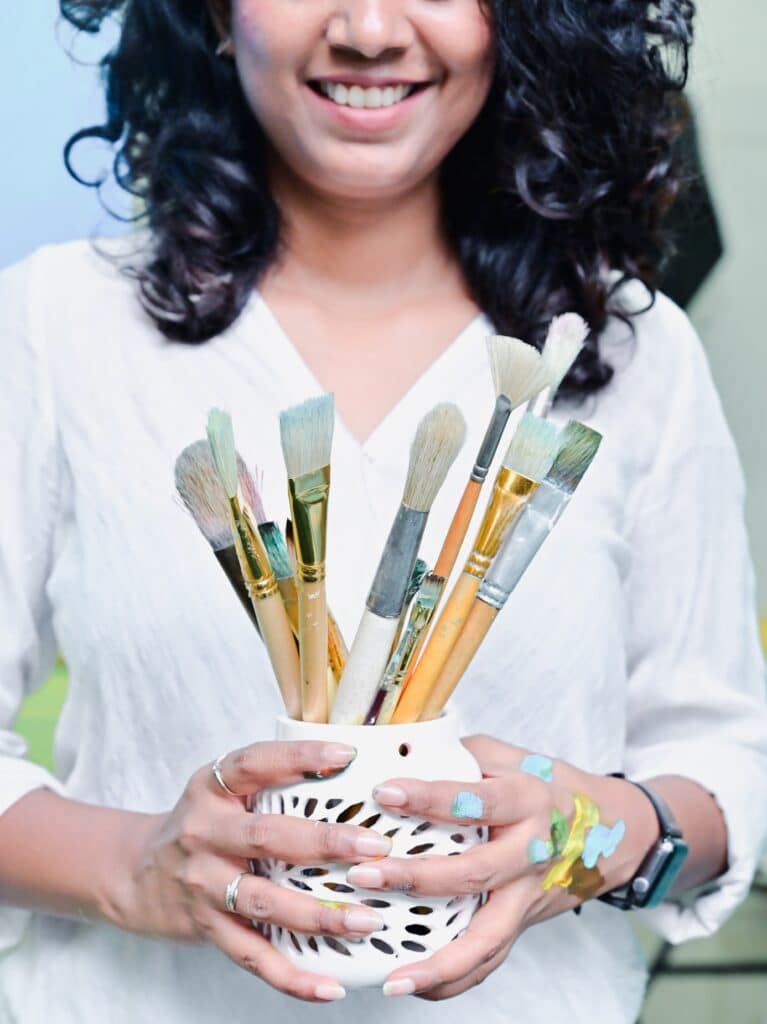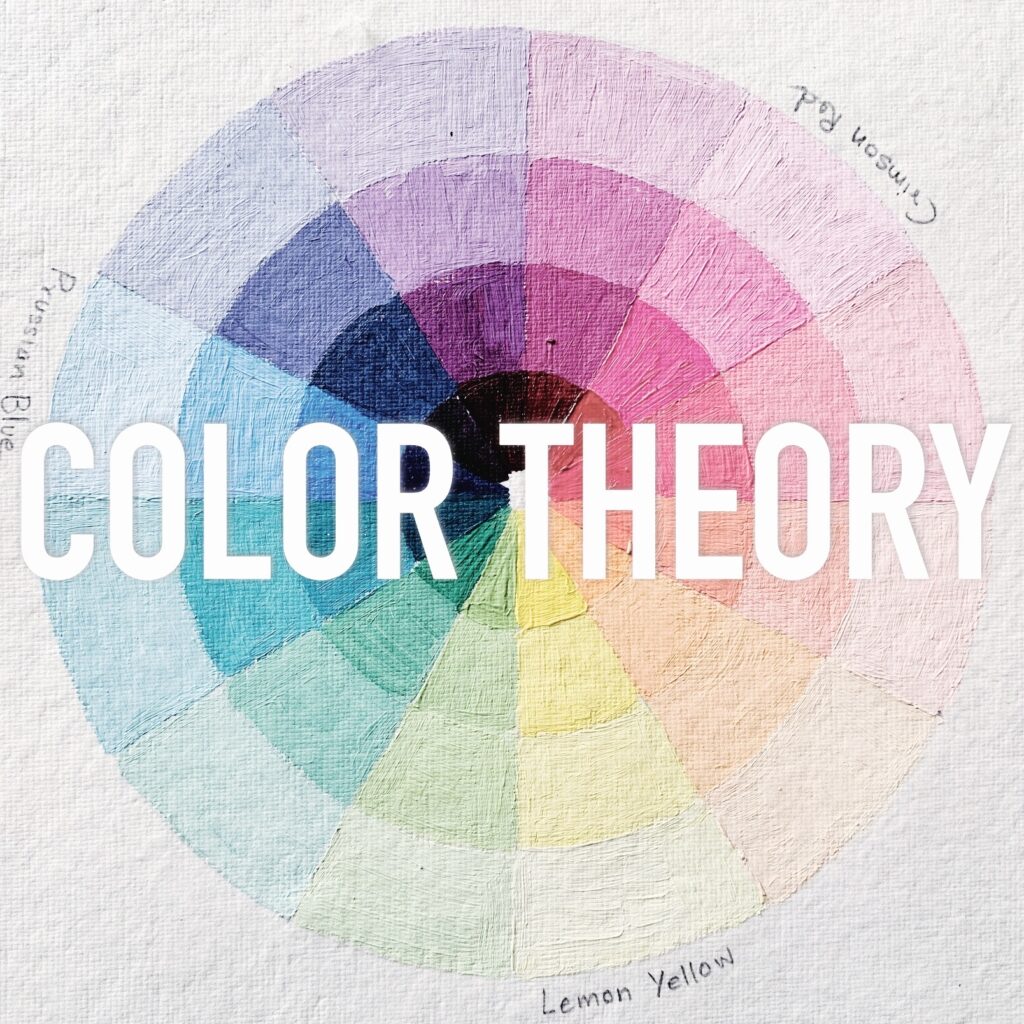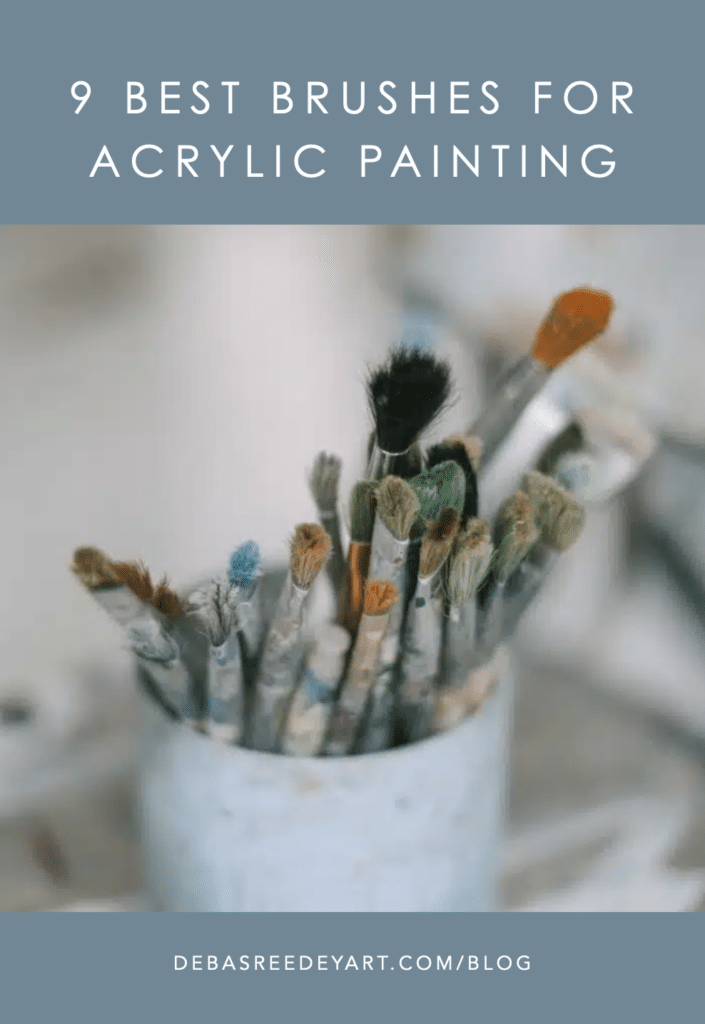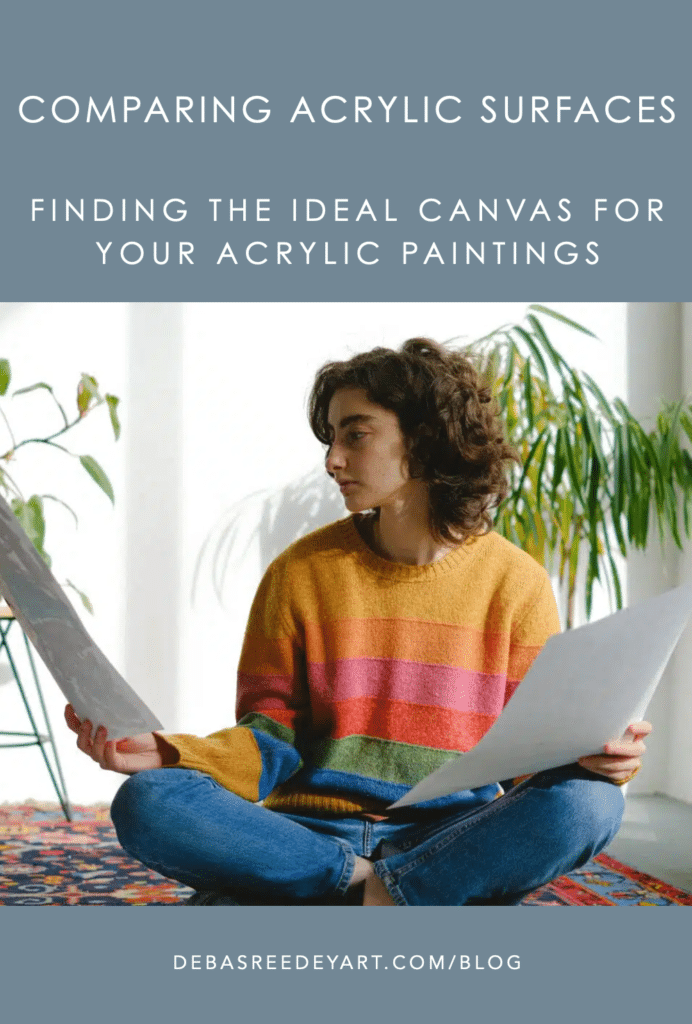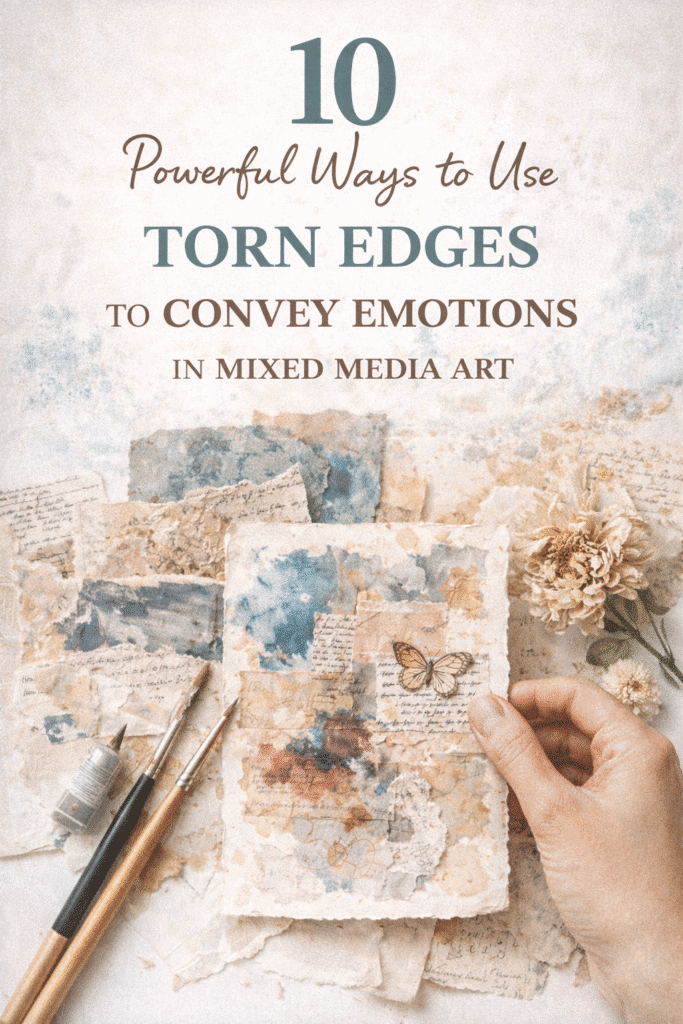My purpose of writing this article is to let you know that staying a minimalist with your acrylic painting supplies actually help you paint better.
Acrylics is comparatively cheaper than any other art medium, so you can start gathering your acrylic supplies on a very minimal budget.
All you need to buy are these 3 absolutely necessary painting supplies.
There are 3 other supporting supplies you need to create an acrylic painting, along with these 3 mandatory ones, which I’ll share at the end.
Do not feel overwhelmed by the long list of painting supplies you see on the internet or in the art aisle – they are all useful in their own ways, but do you really need all of them?
As I’m writing this article, I remember those early days in 2013 when I discovered acrylics. I used to exhaust most of my salary (I was a corporate slave then) buying expensive acrylic painting supplies every month, not knowing what I needed!
So I’m writing this article for the ‘young me’ back then, who could use some advice before spending all her money buying all the fancy stuff in an art store.
Ok, let us get into the details of each of these things.
3 basic
Acrylic Art Supplies
The 3 basic acrylic painting supplies that you need to get started in your creative journey! Rest all can follow later..
Paints
Acrylic paints:
Fluid or Thick Body
Brushes
Acrylic Brushes:
Flat, Filbert & Round
Surface
Canvas, Paper, Wood, Sketchbook
1. acrylic paints

There are so many acrylic paint brands out there, and it can be easily overwhelming to decide which one is best for you.
Acrylic paints can be divided into 2 broad categories based on its viscosity level –
- Fluid Acrylics – more runny like maple syrup
- Thick body acrylics – thick and viscous like butter
Think of it this way – thick body has more paint pigments it and less of the polymer medium, and that’s why it is thicker. And fluid acrylics has more medium than the pigment. Naturally thick body is more expensive because you are paying for the pigments.
Depending on the kind of painting you are doing, you need thick body or fluid paint.
When I started, I never knew about fluid acrylics. So I started with thick body acrylics and used to mix water to thin them out before painting. Then once I discovered fluid acrylics, I did most of my paintings with fluid acrylics.
For beginners, I feel fluid is a good medium to start practicing, unless you are painting an impasto, where you need heavy body paints to create textures.
For fluid acrylics, my go-to brand is Pidilite.
For thick body, I like camlin or liquitex.
This Color Theory Masterclass will help you learn and implement these concepts better in your art practice!
What Colors To Buy?
Initially, you can start by buying a set of 12 colors and see which colors you are needing the most. After painting for almost a decade, I’ve noticed that I use white the most. So now I buy mostly individual paints rather than sets.
The primary colors you need for any painting:
- 3 primary colors – blue, red and yellow
- Black and white
Rest all the colors can be created by mixing these 5 colors. So if you understand color theory and color mixing, all you never to buy are 5 acrylic tubes or bottles.
With that we covered one of the most important acrylic painting supplies. Now let us look at the other two.
2. acrylic brushes

There are mainly 2 types of Acrylic Brushes:
1. Synthetic brushes – This is the most commonly used brushes, the ones that you usually see everywhere. These brushes have soft bristles that are manufactured artificially.
2. Hog hair brushes – These are natural hair brushes which are created from animal hairs. The bristles can be pretty stiff or soft depending on the animal it is made from. These are more expensive than the synthetic brushes, for obvious reasons.
I am always curious and so as a beginner, I bought both these types of brushes. Without this knowledge, I ended up buying the expensive hog hair brushes, which I have almost never used till date. They are good for creating textures, but I realised that if you know how to create textures in your paintings, you can do it with synthetic brushes too.
I only use synthetic brushes these days and the hog hair brushes just add to the beauty of my studio because of their beautiful sturdy look 😉
Now that we have understood the quality of the brushes, let us understand the various shapes of the brushes and which are the actual useful ones.
Shape and Size of Acrylic Brushes
Acrylic brushes can come in various shapes. They look so far in the art aisle of a store, that I feel instinctively drawn towards them and end up buying all shapes thinking they will help me in painting different objects in my paintings. So bought them all. And guess how many of them have been actually useful – zero. I have actually ruined my paintings trying to use all my different brush shapes… haha.
From my experience of painting with acrylics of 10+ years, I have come to the realisation that you need just 2 shapes to create any painting. I’ve created some 2000 paintings probably by now, using just these 2 shapes: one FLAT and one ROUND brush.
The size can vary depending on the size of your painting surface. So for painting on a
- A5 size paper – I use a size 4 flat brush and size 1 round brush
- 4×4 inches canvas board – I use a size 2 flat brush and a size 0 liner brush
- 2ft x 2ft canvas – I use a size 12 flat brush and a size 6 round brush
I hope you are getting the drill here.
So I recommend that you buy a set of flat brush and a set of round brush to begin with. If you like to paint on small surfaces like me, then you may need a miniature brush set as well, which falls under the category of round shape.
There is one bonus brush shape I’ll mention here – Filbert brush (with a rounded tip).
I have not used them a lot, but recently I’ve started to love them while painting. In some paintings, they create perfect shapes of trees or clouds. I’d say this is optional, because you can create the same things with a flat brush also if you know how to round up the pointed corners of a flat brush 😉
Brush Substitutes
Brush is not the only tool you can use to apply paint on canvas. Some alternatives that I’ve used are fingers, sponge & knives.
So now we got the 2 most important acrylic painting supplies – colors and brushes.
3. painting surface

Acrylics are versatile and the whole world is your canvas. Yes, you can paint on any surface as long it has some absorbent quality. And this is the 3rd most important acrylic painting supply to create a masterpiece.
Canvas comes in various forms:
- Canvas clothe roll – A canvas roll is probably the cheapest option, but you have to take the trouble of cutting it into desired sizes.
- Canvas pad – Next best option is to buy a canvas pad where canvas clothes are already cut for your in the size you buy.
- Canvas boards – If you want to have sturdy base to your canvas, go for a canvas board. Once you finish painting, you have the option to display it immediately.
- Stretched canvas – The final and best option is stretched canvas which is what professional artists sell their work as.
Canvas comes in various forms:
- Canvas clothe roll – A canvas roll is probably the cheapest option, but you have to take the trouble of cutting it into desired sizes.
- Canvas pad – Next best option is to buy a canvas pad where canvas clothes are already cut for your in the size you buy.
- Canvas boards – If you want to have sturdy base to your canvas, go for a canvas board. Once you finish painting, you have the option to display it immediately.
- Stretched canvas – The final and best option is stretched canvas which is what professional artists sell their work as.
Some of the other surfaces that I’ve painted on are:
- Wood
- Cardboards
- Amazon boxes
- Terra cotta
- Wall
- Plastic bags
- Fabric
Get my exact supply list for acrylic paintings, with helpful color mixing tips that you can start implementing right away!
Apart from these, there are 3 more things you need to start your painting expedition. But you don’t need to buy any of these from an art store. You can simply reuse stuff lying around in your home.

i. Palette
Use a plate from your kitchen as a palette. Once the paint dries, you can easily clean it off; or use a disposable paper plate.

iI. Glass of water
Simply use a waste glass or jar for storing water while painting. Or use a disposable paper glass.
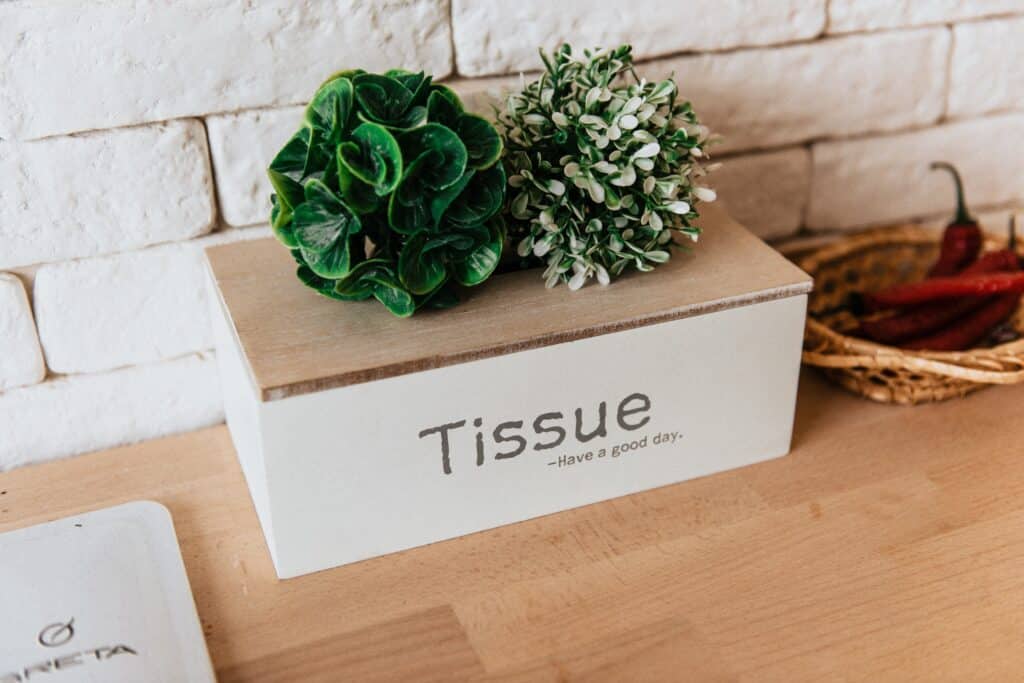
iII. tissue papers
Grab some tissue papers, because you need them to clean off your brushes in between painting.
If you like this article, please pin the below image on Pinterest

Telling you from my experience:
Using just these 3 mandatory supplies – one canvas board, 2 brushes (1 flat and 1 round), limited acrylic colors (depending on the painting), and 3 supporting supplies, I’ve organised close to 700 painting workshops and taught 10,000+ people, and all the paintings turned out pretty awesome.
So I hope you understand, to be able to paint better has nothing to do with buying and hoarding a bunch of art supplies. It actually retards your process of creative thinking and practicing.
If anything, staying minimalist helps you become a better artist.
So what kind of an artist are you – minimalist or do u go all out in buying supplies?
Let me know by commenting below.

